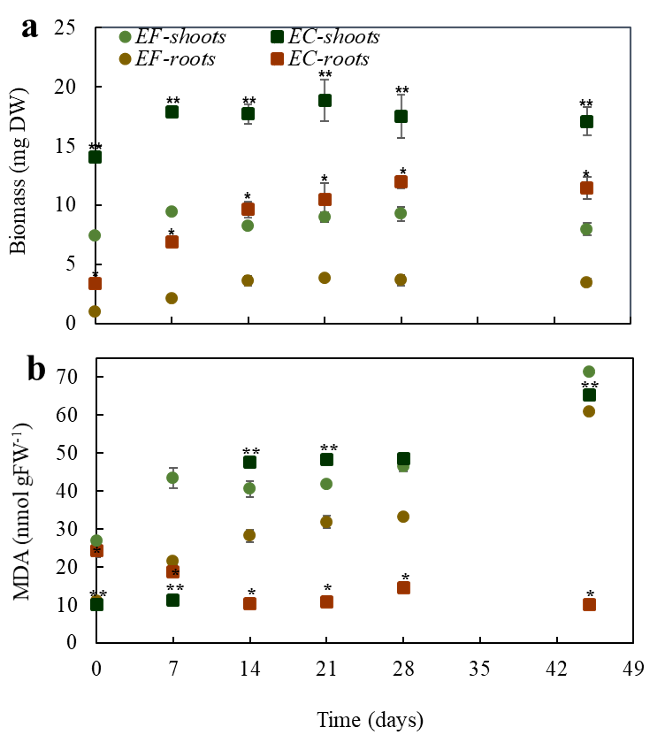 |
|
Due to their mutagenic and carcinogenic effects, polycyclic aromatic hydrocarbons (PAH) have gathered significant environmental concern. Endophyte-assisted phytoremediation is a feasible alternative to reduce PAH pollution in soils more efficiently than plants or microorganisms individually. Endophytes can improve the growth, fitness, and antioxidant system of their hosts, especially under stress, including contamination. In this context, this study aimed to assess the influence of Lewia sp. on antioxidant defense and the hydrocarbon removal by F. arundinacea during 45 days of exposure to a hydrocarbon mixture. Plant growth and lipid peroxidation (LPO), as well as superoxide dismutase (SOD), peroxidase (POD) and glutathione S-transferase (GST) activities were determined in a kinetic assay. The association significantly improved the hydrocarbon removal over a 45-day period, while promoting plant growth and controlling oxidative damage, particularly in the roots. The root antioxidant system in F. arundinacea is itself effective in counteracting the phytotoxicity of direct contact with hydrocarbons. However, Lewia sp. controls LPO in the roots, which may be a consequence of the fungus's own antioxidant system, involving the coordinated activity of SOD and POD. Once the endophytic association is established, it can be applied to phytoremediate PAH-polluted soils during a minimum period of 45 days.
Keywords: polycyclic aromatic hydrocarbons;, model soil, antioxidant enzymes, tall fescue, Lewia sp.
|
|
 |

